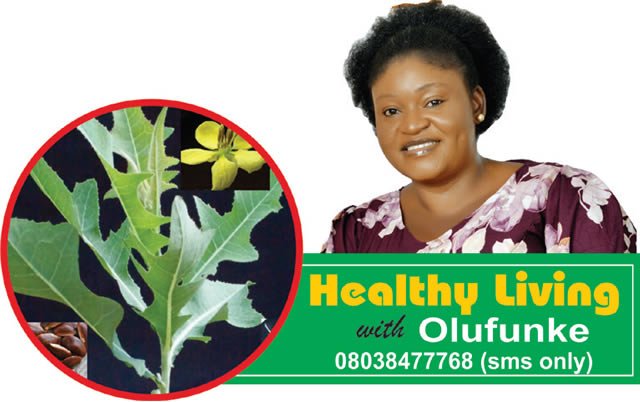
Mangoes are in season. Have you had some? Do you still remember I told you all that I do not like drinking water? We are no longer in the dry season when you have an extremely strong urge to drink water. We are in the season when drinking water does not appeal to me at all. I can eat three square meals in a day without drinking water! So, what I do now is that I take warm water (I can tolerate it better than cold water) first thing in the morning and after meals. If you are like me, try warm water. You can also add lime or lemon juice to it. Our body needs to be hydrated all the time.
PUNCH has a Facebook page and every Sunday when my article is posted, I usually go through readers’ comments. On the day the article on peanuts was published, I read the comments as usual but I noticed that all that was said almost nullified the effort put into the article and can also scare anyone who is genuinely interested in eating peanuts. They are just too serious to be ignored and so I made up my mind that if reacting to them is the only thing space permits me to do this week, so be it.
Before I address them, let me share something with you. An agronomist, Mr Philips Kayode, shared his experience on the curative power of charcoal with me and I will like to share with you all. He said he had a fungal infection in a gap between two of his toes for years. The sore refused to heal despite intensive use of anti-fungal creams. At one point, he said he started putting powdered charcoal on it and that did the magic because he became free from the infection! I am happy that most people know what activated charcoal is already.
Now, back to what readers said about peanuts. A reader said they are high in sugar. That is not so.
They have a low glycemic index score and glycemic load which means they do not cause blood sugar to rise sharply. However, some commercial brands of peanut butter may contain various added ingredients such as sugar. If you learn how to make your peanut by-products such as kulikuli, peanut butter and the rest at home, you will be sure that they do not have any additives.
Another reader said it causes “jedi jedi.” If the reader is referring to the fact that it can cause watery stool, it is possible because peanuts are not actually nuts but legumes like beans which are highly proteinous and can cause farting and watery stool. Another possibility is when we eat nuts and seeds, sometimes we do not crush and grind them properly in the mouth and small pieces go down as whole. If there is an existing haemorrhoids and faeces is a little drier than usual, the nuts that are not properly crushed in the mouth may rub against the walls of the anus veins. These are the only possibilities of it causing haemorrhoids that I can think of, otherwise, you should see nuts as a must eat because they have strong anti-inflammatory properties which could minimise issues with tissue swelling in the area where you had previous problems with hemorrhoids. Also, eating foods that are high in fiber like nuts can make stools softer and easier to pass and can help treat and prevent hemorrhoids.
Peanuts are great libido boosters especially for men as they are a rich natural source of L-arginine. This amino acid helps improve sexual function in men by relaxing blood vessels. Preliminary studies have also found that L-arginine may help with erectile dysfunction. It is an erroneous belief that peanuts can cause erectile dysfunction. So, if the “jedi jedi” the reader referred to is lower back pain and erectile dysfunction in men (it is a common thing in Yorubaland that any man who complains of lower back and waist pain is said to have jedijedi), I can tell you categorically that there is no link between peanuts consumption and that kind of manifestation. It is time to unlearn some things we have been told. On this platform, the only ethnobotanical assertion we uphold are those that are scientifically backed.
The third reader said peanuts can damage the liver. Ordinarily, peanuts cannot cause liver damage, aflatoxins are the culprit. Chemically speaking, aflatoxin is a type of “mycotoxin” which is produced by two different species of mold: Aspergillus flavus and Aspergillus parasiticus. The strains of aflatoxin most common in foods include B1, B2, G1 and G2. After humans or other mammals consume aflatoxin, metabolic processes turn them into metabolites M1 and M2 which have high carcinogenic potential.
The fungi can contaminate crops in the field, at harvest and during storage. Maize, peanuts, cottonseed and other tree nuts are frequently contaminated by these toxins. Research shows that aflatoxin targets organs most especially the liver by raising the risk for liver cancer, hepatitis and other liver diseases. Long-term exposure to aflatoxin is a major risk factor for cancer of the liver called hepatocellular carcinoma, which causes liver scarring, loss of nutrients, inflammation of the digestive tract and other serious problems that can lead to death. Are you scared? You do not have to be scared. Moldy, discoloured parts on nuts, may be a sign of fungus colonisation, so, look for these signs on nuts and avoid buying those infected.
Some studies have found that soaking and fermenting grains and nuts can lower the presence of aflatoxin significantly. The Department of Food Science and Biotechnology at Dongguk University in Korea did experiments to test the effects of soaking, sprouting, and fermenting soybeans on the level of B1 aflatoxin that was able to survive. It found out that these processes reduced aflatoxin levels. Heating processes performed at temperatures between 100 and 150°C (equal to 221–302 °F) for 90 minutes significantly decreased the level of AFB1 by 41.9 per cent and 81.2 per cent respectively. However, this is not exactly a great solution because high heat has the ability to alter other nutrients found in legumes, destroy vitamins and turn them “rancid.”
A 2015 study published in the International Journal of Food Microbiology found strong support for soaking, sprouting and fermenting grains, nuts and legumes due to how lactic acid and other beneficial types of bacteria minimised aflatoxin’s effects. Lactic acid produced during fermentation reduces mold growth and aflatoxin production because of competition for nutrients between bacterial cells and mold/fungi. Lactic acid seems to ultimately bind to aflatoxins in grains, legumes and nuts, cuts off its energy supply and also boosts availability of other beneficial proteins, vitamins and enzymes. Apart from soaking, sprouting, fermenting, consumption of nuts as soon as possible, storing them in a cool, dry place and refrigeration can reduce aflatoxin.
Scientific study
In a study titled, “Manual Sorting To Eliminate Aflatoxin from Peanuts,’’ by Galvez et al, the results obtained confirmed that the sorting process was effective in separating contaminated peanuts. So, from here, we say to you that you are free to eat peanuts.
Copyright PUNCH.
All rights reserved. This material, and other digital content on this website, may not be reproduced, published, broadcast, rewritten or redistributed in whole or in part without prior express written permission from PUNCH.
Contact: [email protected]








